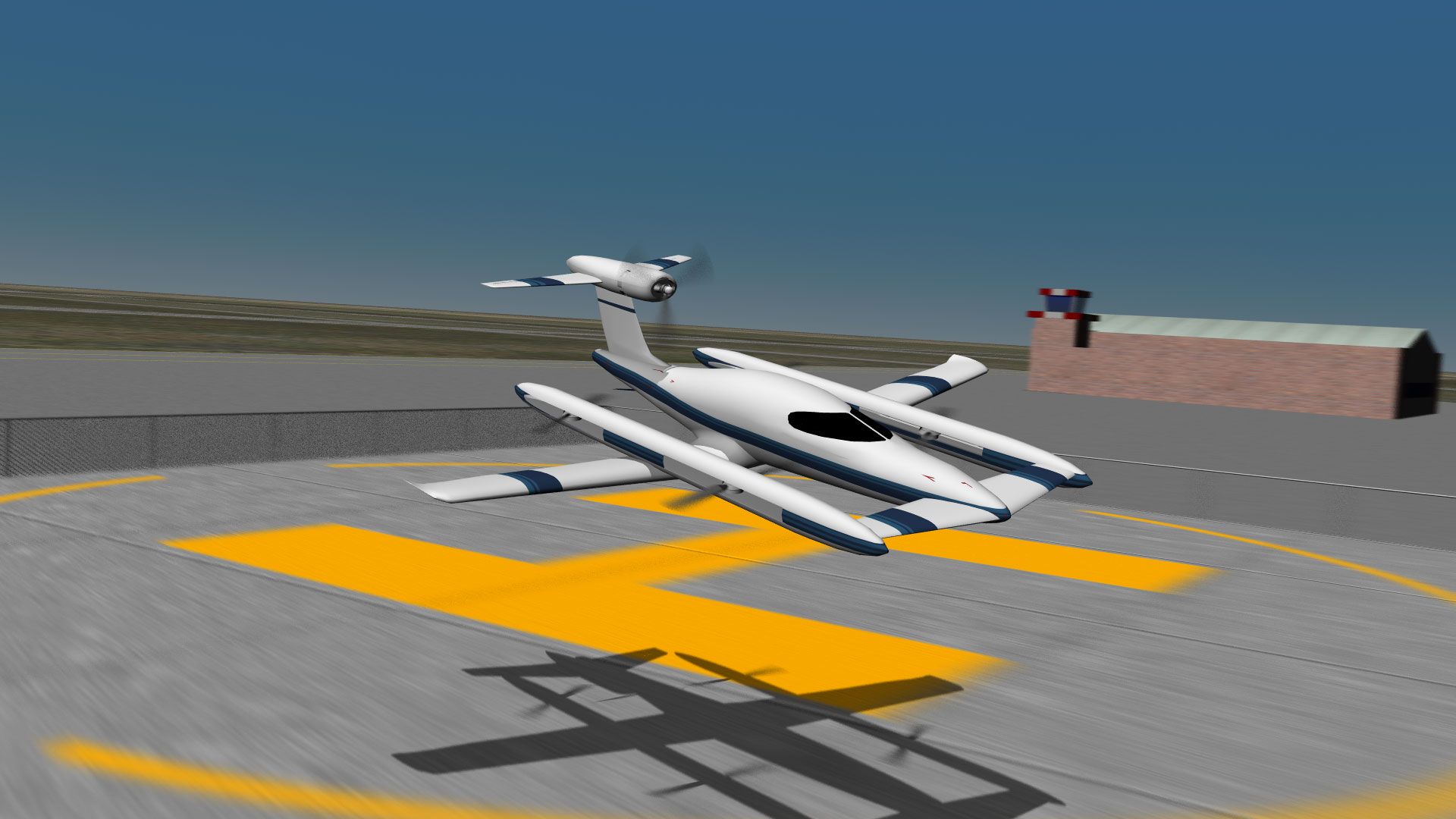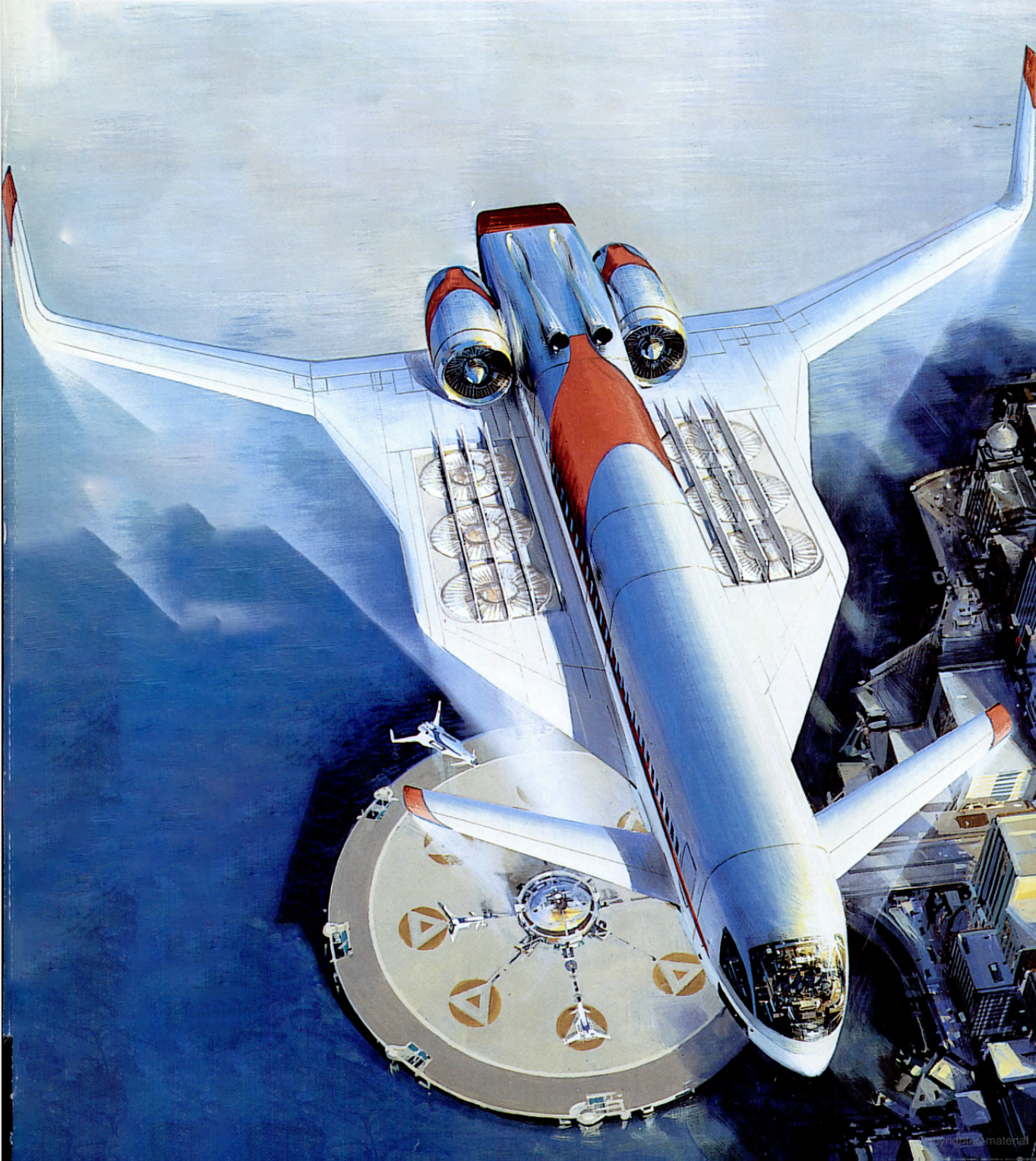First Vtol Aircraft - In the early 1960s, the West German government presented the aircraft manufacturer Dornier with a difficult challenge. Concerned that conflict could destroy existing runways and render its airfields unusable, officials asked Dornier to develop a take-off and landing (VTOL) aircraft. With significant experience in the development of unconventional aircraft, Dornier stood up to the competition and began designing what would become the Do-31, a passenger aircraft that could fly at 351 knots at altitude. of 35,000 feet. Can carry troops.
At the time, powered VTOL aircraft were flying well, but all were small-scale experiments. Hawker built and successfully flew the P.1127, which evolved into the Harrier attack aircraft. Other manufacturers have built similar small VTOL aircraft, such as the Dassault Balzac V, the Short SC.1, and the EWR VJ 101. But no manufacturer has successfully integrated VTOL capability with a cargo platform. .
First Vtol Aircraft

Realizing that engines are what make or break plans and budgets, engineers first looked at the current market to see what could be used, if any. With an unlimited choice of application options, it didn't take long to decide on a Rolls-Royce Pegasus turbofan-as used in the Harrier-for the main powers of the Do-31. However, unlike the Harrier, the engines will be mounted on the lower fuselage like the new turbofans.
Auro Aerospace Revealed Its Intercontinental Ultra Long Range Vtol Ranger
The Do-31 used the same large engines as the Harrier, complete with its rotatable nozzles to control direction during flight. [Credit: Jason McDowell]
Each lower Pegasus is equipped with two inboard and two outboard rotating nozzles for power. With the two-winged wings launching the aircraft into vertical flight, a major challenge presented itself - how to maintain altitude and control engine output? Unlike propeller-driven designs such as the Boeing MV-22 Osprey and Dornier's own Do-29, there is no efficient way to transfer engine power from one wing to the other.
Dornier's solution was to add new engines. Most of them, on the wing tip. The engineers could not find a better option, and therefore, Rolls-Royce was contracted to design and build the RB.162 turbojet specifically for the Do-31.
The humble RB.162 weighed only 280 pounds but produced 4,409 pounds of thrust, more powerful than the engines used in the Hawker 800 business jet. Dornier installed four of these wing lift engines in each wing pylon. This fulfilled the requirements of the Do-31, but more importantly, the aircraft could continue to fly and could be parked even if the engine did not fail.
Types Of Vtol And 4 Airplanes That Can Hover Successfully
As NASA stated in the flight review, the effect of a wingtip lift engine failure would be minimal and easily compensated by the remaining engines. But after one of the main Pegasus engines failed, NASA realized that "the spacecraft could be balanced and a thrust-to-weight ratio greater than 1 could be developed." A look at the instruction manuals shows that this is only true in cold temperatures, but it confirms the design concept.
Four small turbojets mounted in the wing tips provided additional boost and recovery in case of main engine failure. [Credit: Jason McDowell]
By moving the main engine nozzles forward and backward, and by adjusting the power of the smaller wing lift engines, roll and yaw can be controlled. For pitch, the air from the main engines is directed to multiple nozzles in the tail box. These nozzles will bleed up or down to match the pilot's desired pitch control inputs.

Dornier successfully flew the 49,500-pound Do-31 in VTOL flight with fixed flight systems. Two flying prototypes were built and performed in various demonstrations and set world records. However, the technical and financial requirements for the purchase and maintenance of the Do-31 could not be met and the project was abandoned in 1970.
A Rare Video Of The First Vtol Plane That Actually Took Off And Landed
Fortunately, both flight models have been preserved, and are on display at the Dornier Museum in Friedrichshafen, Germany, and at the Deutsches Flughof Schlesheim Museum near Munich. Today, the Do-31 is the first and only VTOL transport aircraft.
Jason McDowell is a private pilot and owner of a Cessna 170 in Madison, Wisconsin. He enjoys researching obscure aviation history and serves as a judge for the National Intercollegiate Flying Association. He can be found on Instagram as @cessnateur. The Dornier Do 31 is an experimental take-off and landing (VTOL) jet-propelled transport designed and manufactured by the German aircraft manufacturer Dornier.
The development of the Do 31 was greatly influenced by the great interest shown by the German Air Force in having an aircraft capable of short take-off and vertical landing (STOVL) aircraft. Those ideas were further strengthened by the publication of the NATO specification NBMR-4, which called for a VTOL-capable strategic support aircraft to be developed alongside the EWR VJ 101, a West German VTOL project. . The aircraft was designed under the NATO agreement. BMR-3.
Three aircraft, two flying and one stationary aircraft were used for construction and testing. On 10 February 1967, the Do 31 took off for the first time. The first flight of this type took place in July 1967.
Of The Strangest Aircraft That Actually Flew
In addition to making test flights, Dornier often demonstrated the Do-31 prototype to officials and the public, such as at the 1969 Paris Air Show. Several world records were set by the model during its flying career. Realizing the high cost, technical, and logistical problems of producing such an aircraft, the German Air Force chose to end tests of VTOL aircraft such as the Do 31, VJ101, and late of the VFW VAK 191B. Due to limited commercial prospects and lack of government support, the Do 31 and other VTOL projects ended up as research projects for some time before their owners gave up. do all the work. The Do-31 is the only VTOL-capable aircraft that can fly.
In the late 1950s and 1960s, the German Air Force was very concerned that, during a major conflict with the Eastern Bloc, its aircraft would be very vulnerable to attack, and so on. it will be stopped immediately. To counter this threat, the Service has actively researched the possibility of dispersal. One of the options is to use the country's autobahns, which would require those aircraft to have short take-off and landing (STOVL) capabilities.
Due to this interest, several tests were conducted, including the modification of several German Air Force Lockheed F-104 Starfighters to launch rockets from the ramps. These experiments are known as the Zero Igth Launch (ZELL) program. Starfighters will be recovered in short sections using anti-aircraft interceptors. Likewise, the later Do 31 was intended to use these same complex aircraft as an earlier platform.

Although it was not until 1961 that the design team created what would become the Do 31.
Watch The World's First Vtol Transport Jet Take Flight
The first work covered a series of studies on the topic of VTOL utility vehicles. Dornier's design team, based at the company's headquarters in Friedrichshaf, was led by aeronautical engineer Gustav Wieland. Meanwhile, Dornier has been in contact with other companies, including the British geno manufacturer Bristol Siddeley, who are working hard on their VTOL-orientated gene.
The design of the flight control system is considered to be an important part of any aircraft capable of vertical flight, especially in terms of failure management.
To support the development program, Dornier built a custom-built flight test kit, which allowed their design team to explore and test conceptual control laws and flight characteristics.
To solve the different equations needed to model the aircraft in detail, the Dornier DO-960 hybrid computer was developed.
Harrier Jump Jet Facts
Despite the concessions to facilitate navigation during flight, the flight control concept used in the Do 31 is more similar to a conventional airplane than a helicopter.
In February 1962, the Do-31 project began with the West German government issuing a development agreement.
In early 1964, Dornier began building two prototype aircraft. They are mainly produced at the company's Oberpfaffhof plant.

Three test prototypes were built, the E1, E2 and E3 - the "E" standing for Experimtell (Experimtal). E1 is powered by Pegasus genes, designed to test flight. The E2 was a static, unflyable test aircraft. E3 was introduced with lift genes Pegasus and RB162, with the aim of evaluating the resistance flight behavior of the structure.
Hitler's Heinkel Lerche: The First Vtol Aircraft
The Do 31 design is highly dependent on its gene configuration. Dornier chose to install the British-built Bristol Pegasus.
Vectored-thrust turbofan engine, a very popular engine used to power the Harrier fighter jet. On the Dove 31, two Pegasus genes were installed in each of the two nacelles. During the flight stand, additional lift is provided by four Rolls-Royce RB162 lift genes mounted on each of the outer nacelles.
By the
List of vtol aircraft, vtol commercial aircraft, experimental vtol aircraft, personal vtol aircraft, vtol aircraft for sale, personal vtol aircraft for sale, future vtol aircraft, new vtol aircraft, vtol aircraft, vtol private aircraft, electric vtol aircraft, rc vtol aircraft

0 Comments